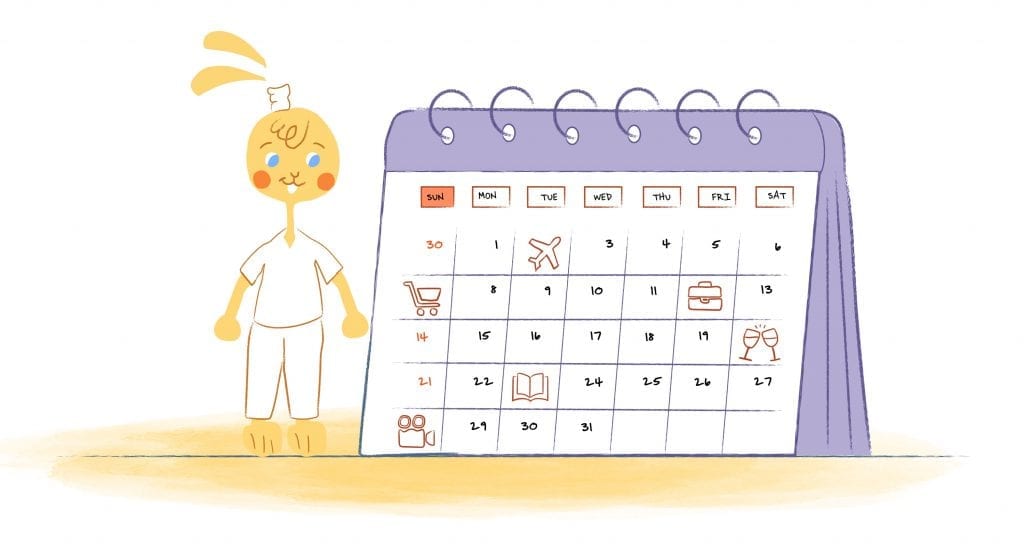

No matter the size of the company — meetings are a necessary evil. Meetings are where you and your team set a strategy, brainstorm ideas, gather team insights, and check the status of a project. But, founders should consider a companywide, “no meetings day.”
You already have a handle on the fact that your talent isn’t too keen on meetings either. Meetings often feel like a waste of time to your team when they are so busy. Particularly difficult on your team are, the status meetings, check-ins, regular team meetings and of course, those pesky update meetings.
Would your team rather watch paint dry than have a company meeting?
According to one poll, 46 percent of respondents stated that they would prefer to do anything else besides sitting in a meeting. What’s more, 17 percent said they would choose to watch paint dry, while eight percent reported that they would rather have a root canal.
But, it’s not just the employees who aren’t fond of meetings. A report published by Harvard Business Review found that over 70 percent of the 182 senior managers surveyed agreed that meetings are unproductive and inefficient. Respondents added that meetings prevent them from completing their own work (65 percent), partaking in deep thinking (64 percent), and missing out on other opportunities to bond with their team (62 percent).
As a result, more and more organizations are choosing to set a “No Meeting Days.”
Why you should consider a companywide, “No Meeting Day.”
To be fair, this isn’t a groundbreaking idea. The idea of having a companywide “no meeting day” has been implemented by many businesses over the years.
Here are a couple of examples:
- Since 2013, Asana has a company-wide rule “No Meeting Wednesdays.”
- After becoming CEO Aria Healthcare Kate Kinslow instituted “No Meeting Fridays.”
- Kelly Eidson, the cofounder of Moveline, has swamped meetings on Tuesdays or “Maker Days.”
- Tristan Walker, founder, and CEO of Walker & Company only schedule meetings on Tuesdays and Wednesdays.
Why have these organizations, and many other organizations, decided to take a stand against meetings?
Dustin Moskovitz, the cofounder of Asana, writes, “The gist is that the “makers” suffer greatly from interrupting meetings in their flow time. Managers are generally used to having a schedule-driven day — so it seems easier for them to throw a disruption into somebody else’s calendar,” the memo reads. “Makers also do this to each other.”
Kelly Edison tells Fast Company that the Tuesday, “‘Maker Day’ is a day where the goal is for people to be productive with a big problem they are trying to solve.” Edison adds, “People in the [product] team can work wherever they want and don’t have to be accessible to anyone but themselves.”
Tristan Walker says that on Mondays, Thursdays, and Fridays “I try to take zero meetings so I can get work done. Tuesdays and Wednesdays it’s usually back-to-back-to-back meetings.”
Between project management software, automation, and the fact that meetings waste both her personal and professional time, Amanda Abella writes in a previous Calendar article that she’s ditched team meetings altogether.
If you’re still not convinced, then consider that businesses lose $37 billion in unnecessary meetings every year, as well as:
- Between preparation, traveling, and attending a five-person meeting eats-up 53 hours and 24 minutes.
- 91 percent of meeting attendees admit that they daydream during meetings.
- Meetings also can add stress to employees. 73 percent are stressed because the meeting takes time away from their family. 64 percent mentioned that they are concerned about work piling up.
- According to Public Health England CEO, Duncan Selbie, “sitting in too many meetings can slow down metabolism and reduce the body’s ability to regulate sugar and blood pressure. This can lead to serious health concerns like obesity, diabetes, and cancer.”
- Your organization can boost productivity by 20 percent by eliminating meetings.
How to establish a meeting-free day every week.
It’s one thing to say that you’re going to implement a “No Meeting Day,” but how can you follow through?
The first step is to make a commitment.
Time coach and author of How to Invest Your Time Like Money, Elizabeth Grace Saunders, suggests, “To start, I blocked off every Wednesday on a recurring basis on my calendar. That way, when people used my online scheduling system, Wednesday simply wasn’t an option.”
Set boundaries.
Saunders adds, “Making a meeting-free day a recurring event instead of picking the day week by week increased my chances of setting boundaries and following through.”
Once you’ve decided to make the commitment, Saunders recommends that the next step is to, “Discuss your strategy with close colleagues and your boss. That conversation can include why you see this as an important part of your schedule. It also says what people can expect from you — not only in terms of meetings — but also in terms of communication. This clearly shows when you will (or won’t) be available on email. The goal is uninterrupted focus.”
With those first two steps out of the way, you should also consider scraping status meetings entirely. Instead, use project management software. Use communication channels like Slack, companywide newsletters, or even just a spreadsheet mounted to the wall work well. This way everyone remains in the loop and are aware of the status of projects without having to attend a pointless meeting.
There are still some meeting you must have.
Yes, there are still some meetings you must have. However, think about replacing meetings with something fun, such as a public outing. This way you and your team can still exchange ideas and information and bond with each other without being stuck in a conference room.
Conclusion
Finally, realize that there will be times when you still need to have meetings. This will include times such as when meeting with a potential client or kicking-off a new project. To ensure that meetings are highly productive, use the following tips:
- Send out an agenda at least 24-hours in advance so that everyone is prepared.
- Follow Jeff Bezos’ “two-pizza rule” — and keep meetings as small as possible.
- Clearly define the role of every attendee.
- Keep meetings short — ideally no more than 18 minutes.
- Enforce a “no cell phones” rule.
- Instead of sitting in a conference room or office, have a standing or walking meeting.
- Consider lunch meetings.
- Assign tasks at the end of the meeting.
- Send out a follow-up email.
If worse comes to worse, here is the best advice we can on how to run a meeting that doesn’t suck.











John Rampton
John’s goal in life is to make people’s lives much more productive. Upping productivity allows us to spend more time doing the things we enjoy most. John was recently recognized by Entrepreneur Magazine as being one of the top marketers in the World. John is co-founder and CEO of Calendar.